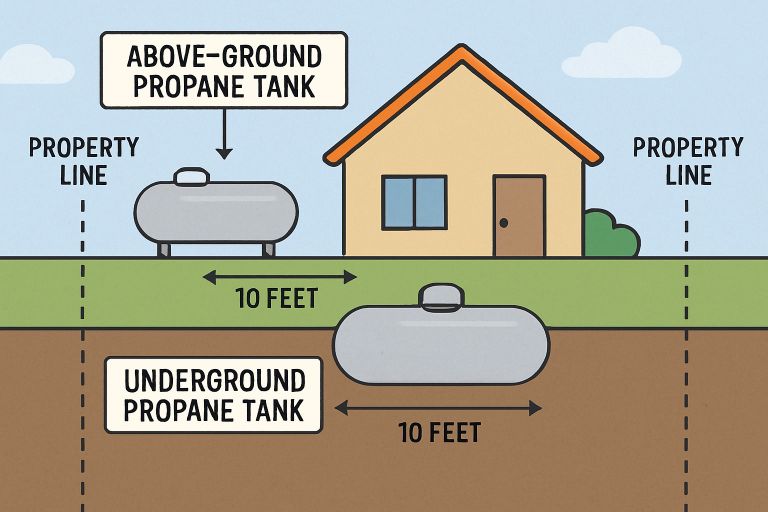From Location to Price: How to Find the Ideal Land for Your Next Investment
Key Takeaways
- Identifying the types of land suitable for investment.
- Understanding the factors impacting land value.
- The importance of location in land investment.
- Tips for first-time land investors.
Why Land Investment?
Land investment is often considered one of the most stable and profitable options. Unlike other assets, land does not depreciate and usually appreciates over time, making it a sought-after choice for novice and seasoned investors. For instance, land for sale in Colorado has seen significant interest due to its diverse landscapes and growth potential. Moreover, investing in land provides a physical, tangible asset that can reassure traditional investors who may be wary of more volatile asset classes.
Furthermore, land investment offers more flexibility compared to other investment avenues. You can develop the land, lease it out, or hold it long-term for future appreciation. This flexibility provides a buffer against market volatility, making land a more secure investment option in fluctuating economic climates. Additionally, land investments can serve as a hedge against inflation since the value of land tends to rise with the cost of living over time.
Types of Land Suitable for Investment
Before investing in land, it’s crucial to understand the different types available. Residential, commercial, agricultural, and recreational lands have unique benefits and considerations. Residential land is ideal for building homes, while agricultural land can be used for farming or leasing. Each category has requisite knowledge and regulations that potential investors must grasp before committing.
Commercial land serves businesses and can be developed into shopping centers, offices, or other commercial establishments. Furthermore, commercial land often comes with zoning laws, permits that must be adhered to, and market research to determine the viability of attracting businesses. Recreational land, frequently used for parks, campgrounds, or private retreats, provides long-term value through tourism and recreation opportunities. Investors can make better decisions and align their investments with long-term goals by comprehending the specific uses and market demand for each type of land. Each type of land requires unique strategies and understanding—whether residential land’s appeal to homebuyers or agricultural land’s potential income from crops.
Factors Influencing Land Value
Multiple elements can influence the price of a parcel of land. These include its location, access to utilities, zoning laws, and potential for development. Researching these aspects can provide a clearer picture of the land’s potential. For example, areas with upcoming infrastructure projects or commercial developments often see a rise in land value. Land in proximity to new highways, airports, or commercial zones often experiences significant appreciation in value, making it a lucrative investment opportunity.
Factors about the environment, like flood risks, soil conditions, and weather patterns, can influence the worth of land. Accessibility to major roads and public services like hospitals, schools, and shopping centers also play crucial roles in determining land value. Investors should conduct thorough due diligence, possibly hiring experts to assess the land and provide a detailed report on its current status and future potential. Professional evaluations can help unveil hidden issues like soil contamination or inadequate drainage, affecting the land’s overall suitability for investment. Moreover, considering economic trends and government policies impacting land values can offer additional insights into making a sound investment.
The Significance of Location
Land location plays a crucial role in investment decisions. Land near urban centers, upcoming infrastructure, or natural attractions tends to have higher value. One must also consider the current state of the local real estate market and demographic patterns. In addition to urban proximity, the socio-economic status of the surrounding area can significantly impact land value. Regions with higher employment rates and better public amenities often attract more buyers, driving up property prices. For example, lands near renowned schools or major business hubs tend to have higher desirability and value.
Moreover, environmental considerations such as natural beauty, landscape, and climate can make a location more desirable. The climatic conditions of an area can affect the type of crops that can be grown, which is crucial for agricultural land investments. These factors should be considered when deciding where to invest. Outlying areas with developmental potential or steady population growth can also present lucrative investment opportunities as the demand for housing and infrastructure grows.
First-Time Land Investment Tips
- Do Your Research: Understand the market, zoning laws, and land usage regulations. Gathering as much information as possible is essential to make informed decisions. Use online resources, attend real estate seminars, and consult with experienced investors to sharpen your knowledge. Researching the trends in land prices and understanding the zoning restrictions can significantly influence the investment’s success.
- Consult Experts: Speak with real estate professionals, surveyors, and legal advisors. These professionals offer valuable perspectives and help pinpoint any issues you may have overlooked. Their experience can save you from costly mistakes in the long run. Beyond identifying issues, experts can offer advice on maximizing the land’s potential through better layout planning and compliance with local laws.
- Plan Your Budget: Account for all costs, including purchase price, taxes, and development expenses. Always have a backup fund in case of unforeseen costs. Financial planning is crucial for avoiding the pitfall of overextending yourself financially. Additionally, ensuring a comprehensive budget covers ongoing costs, such as maintenance and property management fees, helps avoid financial strain post-purchase.
- Visit the Land: Inspect the property to verify its condition and feasibility. Seeing the property firsthand can help us better understand its potential and any immediate concerns that need addressing. Visiting the land can also give you a sense of the surrounding community and potential developmental plans that could impact your investment.
- Consider Long-Term Potential: Consider the area’s future growth and development. Investigate local development plans and community growth projections. Areas poised for growth often offer higher returns on investment. Evaluating local government policies or city planning initiatives can also provide a deeper understanding of the land’s future potential and guide your investment strategy accordingly.
Common Pitfalls to Avoid
First-time investors often need to be more accurate in assessing costs, ignoring zoning laws, and failing to conduct thorough due diligence. Avoiding these pitfalls requires careful planning and consultation with experts in the field. It is vital to have a comprehensive understanding of all associated costs, including hidden expenses like land survey fees, legal costs, and potential environmental remediation costs. Another common mistake is overlooking ecological factors. Ensure the area is not susceptible to natural calamities like floods or mudslides. Not considering these factors can result in significant monetary damages.
Additionally, avoid making emotional decisions. Always base your investment choices on thorough research and sound financial planning rather than impulse or speculation. Investor discipline is essential for making rational and well-informed choices instead of being influenced by market hype or emotions. Continuing education, keeping abreast of market trends, and utilizing expert advice are essential practices.
Conclusion
Investing in land can be rewarding with the proper knowledge and strategy. Understanding the types of land, factors influencing value, and significance of location can help make informed decisions. By heeding these suggestions and steering clear of typical mistakes, you can improve your odds of achieving success with a land investment. Always proceed with patience and due diligence to ensure a smooth and profitable investment journey. Remember, patience and due diligence are critical in the land investment journey. The research and efforts you put into selecting the right piece of land will determine your investment’s success. This long-term perspective can help you navigate through short-term challenges and focus on the sustained growth potential that land investments typically offer.














